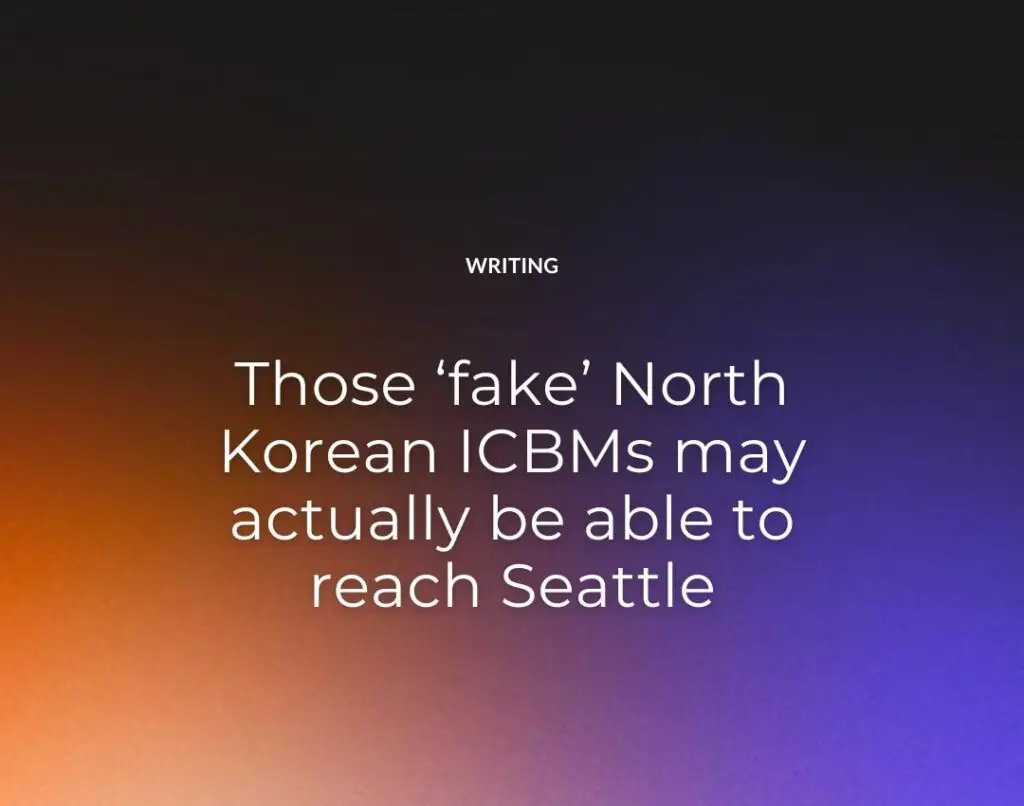By Geoffrey Cain
PRI’s The World
Nov 10, 2013
SEOUL, South Korea — North Korea is the butt of many jokes. Its military parades, for one, offer an eclectic mix of the clownish and terrifying.
With blocks of goose-stepping soldiers in Soviet-style uniforms, tanks in formation, and a pudgy young dictator looking on, the scene is fitting for a cheesy 1960s propaganda broadcast — or even the next Austin Powers movie.
Many experts have noted the threat of a nuclear North Korea, but some have been dismissive of its excessive and at times comical celebrations of military force. Since April 2012, the hermit kingdom has twice shown off at least six intercontinental ballistic missiles (ICBMs) that, foreign analysts have been quick to point out, are fakes and perhaps not worth taking seriously for now.
But two American experts warn that there is reason to worry.
North Korea is probably making progress on its Hwaseong-13 intercontinental ballistic missile (ICBM) program, according to findings published on 38 North, a website of the US-Korea Institute at the Johns Hopkins University in Washington, DC.
“It is important to keep in mind the value of assessing mock-ups when one hears that the six Hwaseong-13 road-mobile, intercontinental ballistic missiles paraded in North Korea in April 2012 and July 2013 were ‘fakes,’” the team argues. “Real fakes, perhaps.”
“We believe the missile mock-ups that North Korea displayed in 2012 and 2013 are consistent with an ongoing development program for a missile with limited intercontinental capability using only existing North Korean technology,” they added.
What does that mean, exactly?
In theory, the ICBMs would be able to reach most of the continental United States.
In practice, at most North Korea could manage to deliver a “light first-generation nuclear warhead” as far as Seattle, the researchers contend.
It’s a scary prospect, though it’s not clear how long North Korea would need to master the technology.
Still, this isn’t the first time the real missiles have followed the fake ones, either. In early 1994, Washington spotted two new mock-ups, well before the military tested what intelligence officials call the Taepodong missile in 1998 and Taepodong-2 missile and 2006.
This time, the researchers analyzed photographs of the ICBM mock-ups, noting an improvement in the design from their first appearance on state television in April 2012 to their most recent showing in July 2013, at a parade commemorating the 60th anniversary of the end of the Korean War.
In the meantime, we know that the North Korea has short- and medium-range missiles that can hit US military bases in Japan and maybe Guam — provided the country’s engineers can master certain fuel technologies.
Indeed, North Korea likes testing its rockets and missiles every few years. Thankfully, the isolated nation has shown enough restraint to not try them on a real target.
The article was originally published in PRI’s The World
See Also:





